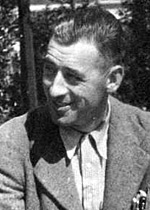Rupert T. Gould. Oddities: A Book of Unexplained Facts. 2nd edition, Geoffrey Bles, 1944.
Rupert T. Gould. Enigmas: Another Book of Unexplained Facts. 2nd edition. Geoffrey Bles, 1946.
Eric Frank Russell. Great World Mysteries. Mayflower Books, 1962.
Rupert T. Gould. Enigmas: Another Book of Unexplained Facts. 2nd edition. Geoffrey Bles, 1946.
Eric Frank Russell. Great World Mysteries. Mayflower Books, 1962.
I have mentioned earlier that my interest in all things Fortean and Paranormal was sparked by watching a TV programme called 'Court of Mystery' back in the summer of 1961. These books follow very much in that tradition.
I encountered the two books of Rupert T. Gould in Colwyn Bay library in my summer holiday in 1963, a time when I first became a voracious reader. They were among the first compilations of historical and quasi-scientific mysteries, and featured both classics such as the moving coffins of Barbados, Andrew Crosse’s electrical insects and the Devils’ Hoofmarks, but also a variety of recondite matters that have rarely featured in more modern compilations, such as topics ranging from a mysterious perpetual motion machine, the planet Vulcan, James Price the last of the alchemists, tales of great longevity, to a variety of rather esoteric geographical puzzles, and all the way through to Nostradamus.
Though it is by no means apparent on the reading of these books, Gould was a strange, troubled personality, who today would probably be diagnosed quite a way along the autistic spectrum, in addition to bipolar disorder (see my review of his biography HERE.)
Something of his pedantry and obsessions with minutiae comes out in these books, He was a far more methodical writer than Charles Fort, though was not without a very dry sense of humour. On the other hand, re-reading these books after several years, I found portions of them very heavy going indeed, particular the pieces on whether Franklin’s ships were seen floating on icebergs in Oddities and the chapter on the landfall of Columbus in Enigmas, as well as some of his long asides. On the other hand his willingness to quote primary sources at length set a standard that few of his successors have met.
For all the scholarship and attention to detail, Gould seems now surprisingly credulous on some topics; I think he was at least half willing to believe that Andrew Crosse had somehow manufactured insects, that there might be actual perpetual motion machines, that lead really had been transmitted into gold, and that Nostradamus might have been a real prophet. Perhaps these are products of the time, and Gould would have been in the very great majority in not getting his head round the scientific revolutions of his day.
 One of Gould’s many correspondents was science fiction writer and Fortean, Eric Frank Russell (1905-1978) [right], who records that Gould wrote on random scraps of paper. Russell found Gould 'acerbic', perhaps because Russell’s rather freewheeling approach clashed with Gould’s pedantic scholarship. Russell later wrote some equally acerbic letters to Bob Rickard of Fortean Times, formerly The News. I suspect that Russell found the tinge of mysticism evidenced by several FT writers in its early days little to his taste. Even less to his taste, I suspect, was John Michel.
One of Gould’s many correspondents was science fiction writer and Fortean, Eric Frank Russell (1905-1978) [right], who records that Gould wrote on random scraps of paper. Russell found Gould 'acerbic', perhaps because Russell’s rather freewheeling approach clashed with Gould’s pedantic scholarship. Russell later wrote some equally acerbic letters to Bob Rickard of Fortean Times, formerly The News. I suspect that Russell found the tinge of mysticism evidenced by several FT writers in its early days little to his taste. Even less to his taste, I suspect, was John Michel.
I first came across Great World Mysteries in the book department of a Manchester store in Christmas 1962, but the household authorities did not think it suitable. Fortunately a friend at school managed to get hold of a copy by the subterfuge of buying it for his father for Christmas. Dad did not much appreciate it, so my friend got it and loaned it to me. Later I was able to swap a puzzle book for it, and so it came into my possession.
The best way of summing up Great World Mysteries is 'Rupert Gould meets Charles Fort'. The first few chapters deal with classic 'unsolved mysteries', including the Mary Celeste (a rather inaccurate account, with boats still present when the ship was found, and suggesting that the crew threw themselves overboard in a fit of ergot-induced madness), the 'Waratah', the disappearance of Benjamin Bathurst, the appearance Kaspar Hauser, etc., but then goes into the general Fortean stuff, from his treatment of the Barbados coffins, sea serpents, and spontaneous human combustion, to levitation and UFOs.
Of the latter Russell preserved all sorts of clippings, including the 1938 wave of things being reported falling into the sea (as real aircraft were to do two years later), and some suitably acerbic comments of his own on the UFO scene of the 1950s, and the strange characters it attracted.
Much of Russell’s material was collected as UK representative of the old Fortean Society run by Tiffany Thayer - a very strange character by all accounts. The fragments in Great World Mysteries hint at a range of material still to be mined in his archive at Liverpool University. These are certainly three books the well-read Fortean ought to have, if copies can be located.
- Peter Rogerson.


No comments:
Post a Comment